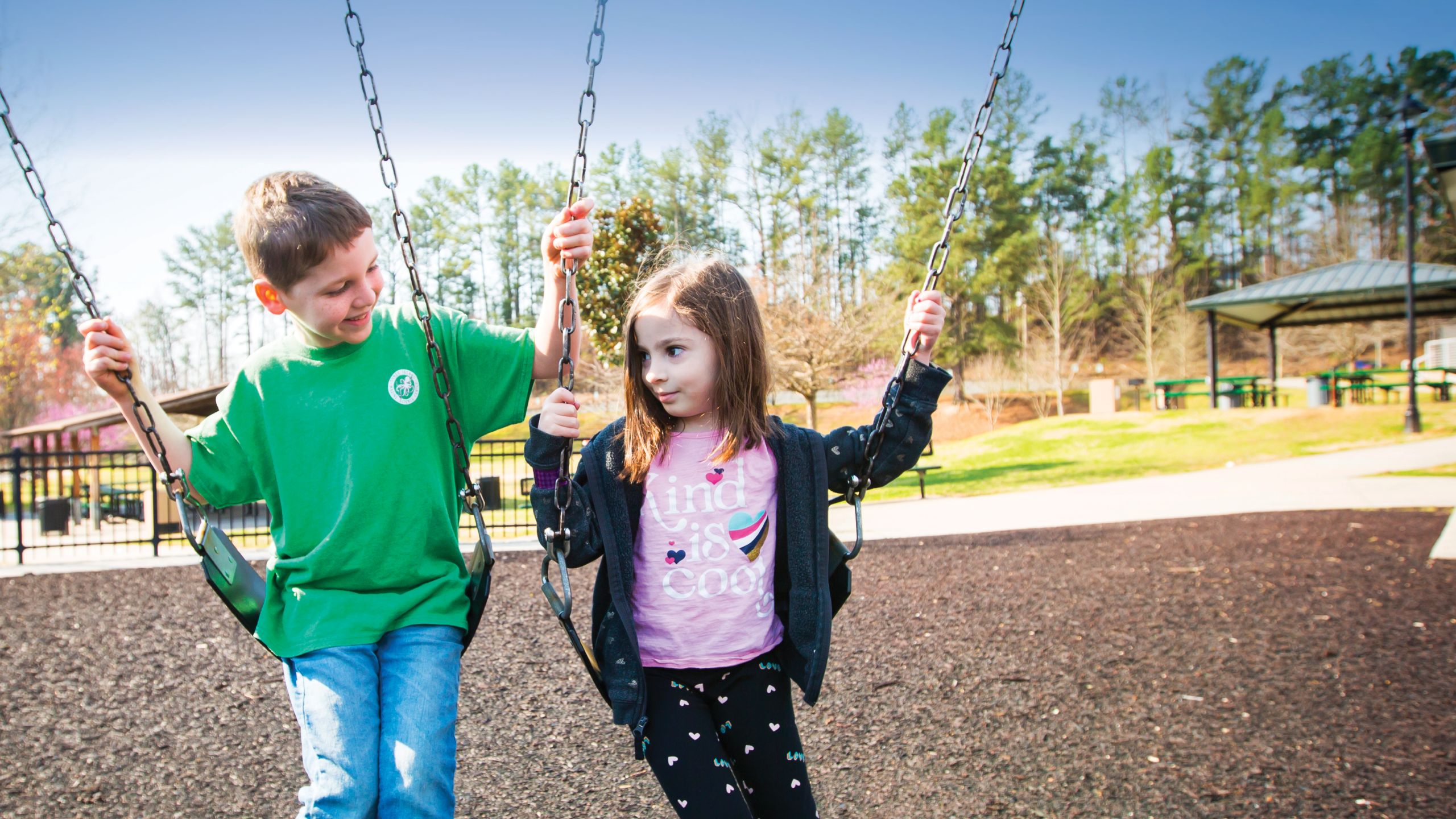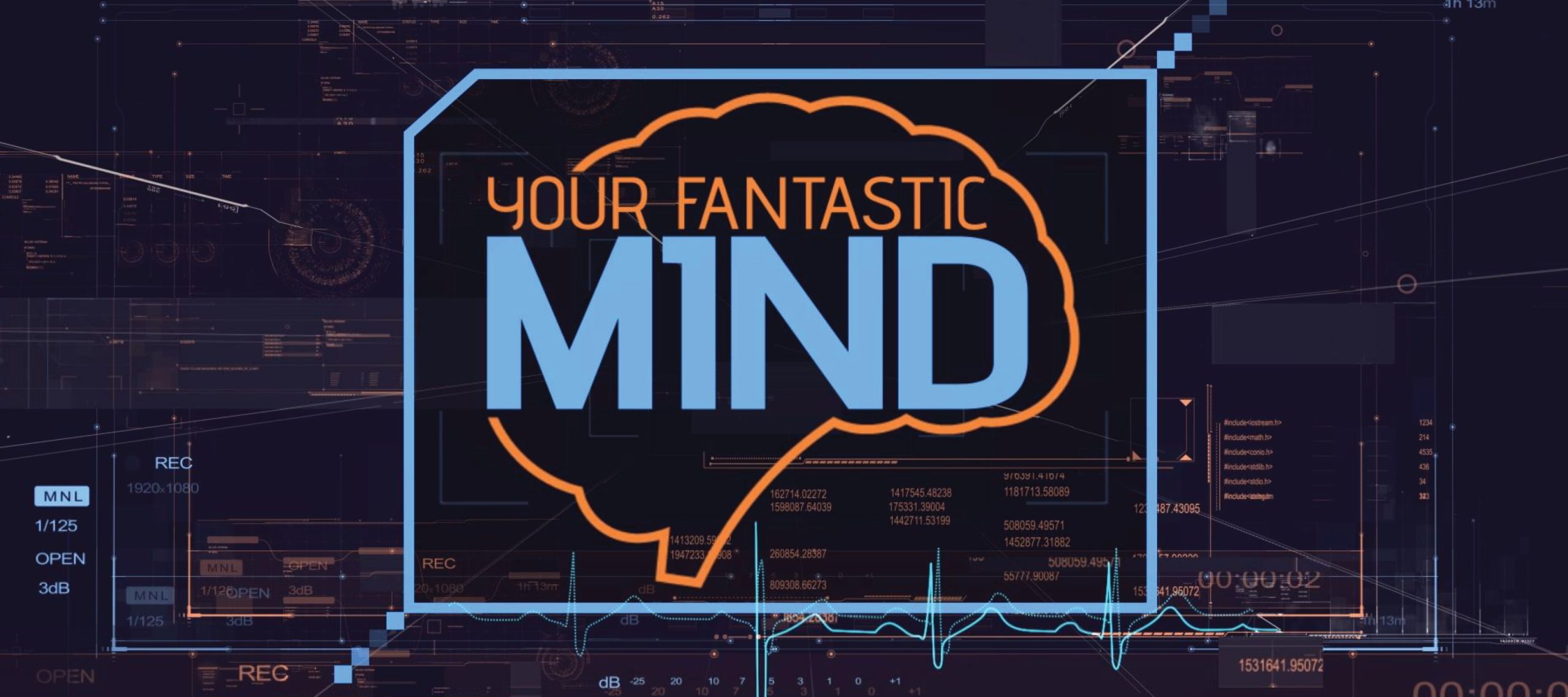The Perfect Match
Children developing typically and those on the autism spectrum learn together at Early Emory

As a new pre-K student at the Early Emory Center for Child Development and Enrichment, Elise Sabetai was quiet and shy. Her classmate Amiel Wallenstein was outgoing, personable, and eager to make friends.

They were the perfect match.
Early Emory is the university’s year-round preschool education program for children ages one to five. To the casual observer it looks like any other preschool, but there’s an important difference: Two-thirds of its students are developing typically like Elise, while one-third has been diagnosed with autism spectrum disorder, including Amiel.
“For typical children, Early Emory is an enriched early childhood center where children receive quality early educational support,” says Michael Morrier, executive director, program director for Emory Autism Center’s Screening and Assessment Clinic, and assistant professor in the Department of Psychiatry and Behavioral Science. “For the children with autism, it’s an intensive social communication treatment program using applied behavior analysis embedded within regular, ongoing preschool activities.”

Not Too Cool for School: Michael Morrier is executive director and program director for the Emory Autism Center’s Screening and Assessment Clinic and assistant professor in the Department of Psychiatry and Behavioral Science.
Not Too Cool for School: Michael Morrier is executive director and program director for the Emory Autism Center’s Screening and Assessment Clinic and assistant professor in the Department of Psychiatry and Behavioral Science.
Attentive to each child
The two-to-one mix is maintained as typically developing children and those on the autism spectrum are combined and assigned by age to one of four classes: toddler, early preschool, preschool and pre-kindergarten. A high teacher-student ratio ensures close adult guidance and attention to the verbal- and social-skill development plan drawn up for each child.
The school day runs weekdays from 8:30 a.m. until 3:30 p.m., with a daycare component that ends at 6 p.m. Early Emory is fully accredited, and its pre-K is approved for Georgia’s pre-K program.
The friendships that arise among Early Emory students offer life-changing social-skill learning opportunities for both students on the spectrum and their non-autistic classmates.
“Decades of research show that kids who are in inclusive programs end up being more empathetic and accepting toward differences than kids who are not in those situations,” says Morrier. “They also are more helping and advanced—academically, socially, and language-wise—because they are getting a lot of opportunities to practice those skills.”
Early Emory was founded in 1991 by Gail McGee, professor emeritus of psychiatry, as the Walden Early Childhood Center. A pioneer in the incidental teaching method, she had been recruited to the Emory faculty in the wake of her success starting a similar program at the University of Massachusetts, Amherst six years earlier.
For nearly thirty years, Early Emory has served as a model for other “immersion” preschools around the country. Its guiding philosophy is that children learn best when they’re learning from each other and having fun.
Given the pervasive—and wrong—autism stereotype, one might assume that typically developing children would most likely take the lead in initiating new friendships.

Besties: Amiel and Elise were best friends at the Early Emory center, where typical children and those on the autism spectrum share classrooms. They still get together to play when they can.
Besties: Amiel and Elise were best friends at the Early Emory center, where typical children and those on the autism spectrum share classrooms. They still get together to play when they can.
Becoming fast friends
Not so, as in Elise and Amiel’s case.
Elise was four years old when she entered Early Emory. It was a bit overwhelming in the beginning —she’d been in a small, six-child daycare setting since she was six months old but now found herself in much larger, unfamiliar surroundings among people she didn’t know.
Amiel, a year older and a three-year Early Emory veteran, struck up a conversation with her within the first couple days of school. They became fast friends and were often inseparable, partnering in class activities and during play time.
What was so nice about Amiel, says Elise’s mom, Amanda Sabetai, is that “he was really welcoming and inviting to her as a new student in the class. He was more talkative than Elise, and reaching out to her made her feel more comfortable when she started.
“We have people in our family with special needs and learning disabilities,” she adds. “That’s partly why it was really important to my husband and me that she have this kind of interaction beginning at a young age with people who are not just like her.”

Support after the diagnosis
Parents of a student with autism receive encouragement and support even before their child starts school at Early Emory.
“You could’ve knocked me over with a feather,” recalls Rachel Wallenstein, Amiel’s mom, upon receiving her son’s autism spectrum diagnosis at the Emory Autism Center. “We knew absolutely nothing going in. That was the first experience my husband and I had learning about autism.”
In the four months between Amiel’s diagnosis in April 2013, when he was twenty months old, and his enrollment in August, Early Emory staff provided the Wallensteins parenting advice and help with getting him ready for school. The support continued throughout his time at Early Emory.
The school curriculum, which is followed by all of the children, details class activities tied to specific achievement goals. Teachers step in to provide extra help for students on the spectrum when necessary.
“Every teacher looks at where the child is as an individual, then determines what’s the next skill they have to learn,” says Morrier. “They keep challenging all of the children, giving them the support they need in order to be successful to keep learning.”
The curriculum is implemented through the incidental teaching method, whereby instructors take advantage of a child’s natural interest in a particular activity in the moment to teach material related to that interest, with the goal of helping to reach prescribed skill-acquisition targets.

Creative learning with dinosaurs and snacks
These targets include benchmarks for communication, behavior, sociability, daily living skills, and academics, according to Brittni Williams, Early Preschool and Pre-K Program manager. “I also write goals that help push them forward so they have the skills that will prepare them to be in a mainstream kindergarten classroom when they leave our program.”
Let’s say a curriculum subject for pre-k is dinosaurs. The classroom environment, designed to facilitate social interaction, is replete with dinosaur-themed posters and charts, bones and fossils, toys, and tools an archeologist might use. The materials engage the students’ curiosity, opening the door for teaching: What is a dinosaur? Where did they live? Where do fossils come from? How are they formed? and so forth.
“Over time, the more you expose them to different toys and environments in which they’re naturally interested, you can teach a slew of things,” says Williams. “The children become very knowledgeable, their vocabulary increases, and they develop great social skills by playing and sharing the toys with each other—all the things we want our kids to pick up on.”
Another technique employed at Early Emory, and closely tied to incidental learning, is applied behavior analysis, where positive reinforcement encourages meaningful changes in behavior.
For example, at snack time, a child indicates that he or she wants a cracker by looking at it, making a noise or reaching for it. The teacher prompts the child for whatever the requesting goal happens be—it may be that the child has to say “cracker” in response to being asked, “What do you want?”
When the child responds correctly, the teacher affirms the behavior—“Oh, great! You said cracker! You may have some cracker.”—and hands over a small piece. The snack had been cut into pieces beforehand so the requesting exercise could be repeated several times until the child learns it.
“If you give a child a whole cracker, they don’t have to talk to get more snack,” Morrier observes. “By the time the typically developing children get to be three and four, we start teaching them how to hand out snacks so they have more verbal interactions with the children with autism.”
The advantages of typical children as role models, in the context of applied behavior analysis, is another learning technique emphasized at Early Emory to help children on the spectrum develop age-appropriate social and language skills.
“We teach the kids to imitate each other,” Morrier explains. “In a toddler class, it may be imitating hand movements during a circle-time song or imitating throwing a ball on the playground.”
Older typical children may interact with their classmates on the spectrum through make-believe activities, like acting out a pretend visit to the shoe store or doctor’s office.

The friendship that blossomed between Amiel and Elise is one of the benefits of Early Emory's blended classrooms, which include typically developing children and children on the autism spectrum.
The friendship that blossomed between Amiel and Elise is one of the benefits of Early Emory's blended classrooms, which include typically developing children and children on the autism spectrum.
Dance steps to success
Williams cites the example of a dance party where typical kids are dancing, but their classmates with autism are standing off to the side, unsure what to do.
“There’s a three-step prompt level we would use to help a child on the spectrum look at their typical peer and then copy that peer’s dance moves. The typical kids aren’t doing anything different, but now the kids on the spectrum, as part of their therapy, are doing the same things their typical peers are doing so that they’re integrated into the activity.”
Teachers methodically track in detail each student’s progress as it relates to the goals designated for each activity. Step by step, as the goals build upon each other and become more sophisticated, progress is shared with parents on an ongoing basis.
Available outcome data for Early Emory alumni on the spectrum, though several years old, is impressive nonetheless: Ninety-five percent left the program with functional verbal language skills while ninety-two percent, with various levels of support, were mainstreamed into regular kindergarten.
Elise and Amiel graduated from Early Emory in 2017. Amiel is in his second year at the Hess Academy, and Elise attends first grade at a public school in DeKalb County. Both mothers report that they are doing well.
Amiel and Elise get together occasionally for play dates whenever their family schedules permit.
“Amiel still refers to Elise as his best friend,” says Rachel, with a smile.
Story by Gary Goettling | Photography by Kay Hinton

Understanding Autism | Research leads to improved intervention
The Early Emory language- and social-skill development model, where kids with and without autism learn together in a shared environment, capitalizes on the basic fact that human brain development is socially driven.
“Our brains are prewired to attend to and learn from other people,” says Catherine Rice, director of the Emory Autism Center. “Most people come into the world ready to receive this important input. As our brain matures, there is an initial proliferation of neurons that gets trimmed back and more efficient pathways form in determining how parts of the brain communicate with each other. This is part of a mutually reinforcing feedback loop between the child’s neuro-maturation and their experience in the world.”
A diagnosis of autism spectrum disorder is based on observable behaviors suggesting that a particular individual is not attending to and learning from the social world as expected for their age and stage of development. Early signs of autism in toddlers, for example, include not responding to their name, not making eye contact, and not pointing to show or share things with others. “These are all clues to the state of the brain as a social learner,” Rice says.
The younger the child, the more likely it is that intervention will yield a positive outcome. In a groundbreaking 2017 study, Emory researchers discovered that developmental deviations in social communication can be seen in children only two months old—well before the 12-18 months age threshold of the usual autism diagnoses.
The findings were drawn from a research program involving investigators from the Marcus Autism Center, Emory’s School of Medicine, Children’s Healthcare of Atlanta, Yerkes National Primate Research Center, and other collaborators across the US.
The study also found a genetic component to development deviations, opening a new pathway for further research. Two years ago, the interdisciplinary work was extended by an $11 million, five-year grant by the National Institutes of Health and will examine many areas related to autism treatments and prevention.
Understanding the genetic side of autism research is the mission of SPARK (Simons Foundation Powering Autism Research for Knowledge), a research initiative led by the Emory Autism Center and twenty other institutions.
For more information, visit SPARKFORAUTISM.ORG/EMORY

GPB TV Series Explores ‘Your Fantastic Mind’
In their pre-k classroom, best friends Elise, four, and Amiel, five, are seated next to each other at a table, intently drawing pictures.
“She likes me,” Amiel states, looking up from his paper. “I think the first time we met we started playing with each other, right?”
“Yeah,” Elise replies, still drawing.
“I don’t know what day it was,” he continues. “I forgot what day it was. Could’ve been a Monday.”
The children’s heart-warming interaction is a scene from one television episode of “Your Fantastic Mind.” It focuses on the effects of the inclusive learning environment at Emory’s preschool, Early Emory, where typically developing kids such as Elise and children on the autism spectrum, like Amiel, learn and grow together to their mutual enrichment.
A collaboration among Emory University, the Emory Autism Center, and Georgia Public Broadcasting, with support from the Southern Company Charitable Foundation, the twelve-episode “Your Fantastic Mind” series reveals the real-life stories of people with brain-related medical issues and how Emory researchers are helping them improve their health through applied innovative, groundbreaking research.
Award-winning Atlanta journalist Jaye Watson is executive producer, writer, and host for the series, which was produced for broadcast over GPB’s nine-station television network.
In addition to autism, other topics highlighted in “Your Fantastic Mind” include:
- Amyotrophic lateral sclerosis
- Alzheimer’s disease
- Concussions
- Epilepsy
- Huntington’s disease
- Obsessive-compulsive disorder
- Parkinson’s disease
- Post-traumatic stress disorder
- Sleep apnea
- Video gaming disorder


Want to know more? Please visit
Emory Magazine
Emory News Center
Emory University


